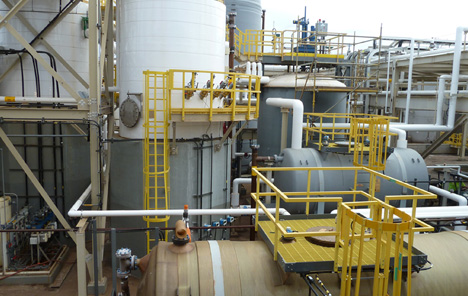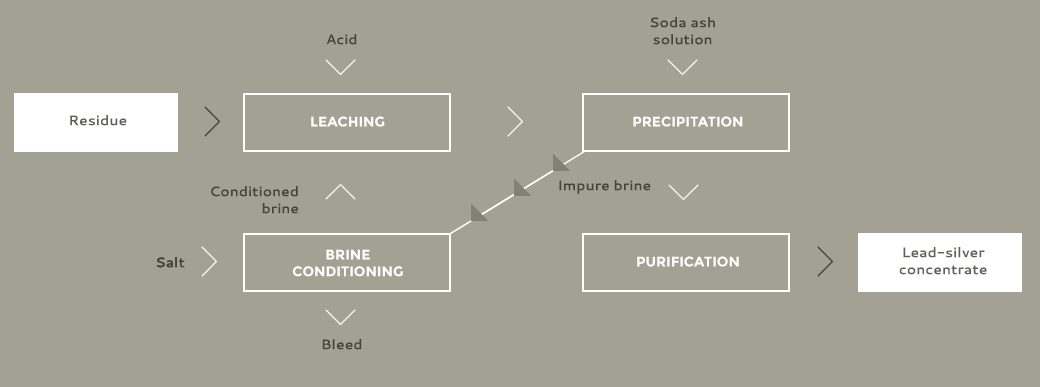
Commercially available zinc and copper concentrates typically have a significant content of valuable metals such as lead, silver or indium, which are accumulated in the solid waste of both hydrometallurgical and pyrometallurgical production technologies.
Recovering these metals from the mentioned processes gives the possibility of offering waste to be an additional source of revenue for refineries, based either on the production of metal ingots or the sale of concentrates with a high market value. Moreover, it provides the possibility of reducing the volume of waste generated.
The Proprietary Technologies Development Division (DDTP) has developed a lead and silver recovery technology based on hot brine leaching and subsequent precipitation of the valuable metals. The technology is applicable to metallurgical wastes of different nature (oxides, sulfides and jarosite wastes among others), with certain variations in the basic scheme according to the type of waste to be treated and the target metals.



Performed in chloride medium (hot brine), in order to allow lead, silver and other metals pass into solution. The leaching conditions and the use of additives may vary depending on the nature of the material. ,
Performed by adding carbonate to give a first solid containing all the lead and silver from the previous solution.
The solid is treated to remove any contaminants and yielding a high grade lead-silver concentrate and a purity that allows to feed it directly to a melting furnace , being free of chlorides and sulfates.
It allows the regeneration of the reaction medium, closing the hot brine circuit and thus consumptions and effluent generation minimization. It is essentially a matter of removing dissolved sulfates from previous stages, as liquid or solid sodium sulfate purge.
The following figure shows an outline of the technology identifying the main stages:


Digital Marketing. This project has been developed by Grupo Enfoca: Inbound Marketing Alicante